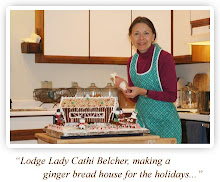 I was filling one of my hummingbird feeders today, when an amazing thing happened. I started unscrewing the glass container from its hanger, not knowing that one of these feisty little fellows was feeding on the other side! If he had only known that a fresh, sweet treat was soon to be in store for him, he might have been less displeased. As it was, he was pretty annoyed with me and started buzzing and whirring around, making those high-pitched raucous little squeaks that betray much hummingbird-emotion! This guy was really irked. I filled the empty glass feeder from the deck, holding the bottle over the railing in case my aim wasn’t quite as good as my intentions. With absolutely no self-control, my tiny little friend came within an inch of my arm, hovering there to survey the situation. He was so close that I could feel the wind on my arm from his 100 mph wings! (Actually, they beat 80 times per second; but I’ll let you do the math). Last year Billy took a magnificent photo of one of our Ruby-throated hummers here at The Lodge. The iridescent feathers were incredible, with the characteristic red bib in front. Amazingly, the next photo he took of the same bird showed no red at all!! It turns out that these birds have the ability to control their feathers in the same way that a dog can raise the fur on the back of its neck! But when hummingbirds do it, their iridescent feathers reflect the light differently at different angles, and that is why his photos of the same hummer looked like two totally different species.
I was filling one of my hummingbird feeders today, when an amazing thing happened. I started unscrewing the glass container from its hanger, not knowing that one of these feisty little fellows was feeding on the other side! If he had only known that a fresh, sweet treat was soon to be in store for him, he might have been less displeased. As it was, he was pretty annoyed with me and started buzzing and whirring around, making those high-pitched raucous little squeaks that betray much hummingbird-emotion! This guy was really irked. I filled the empty glass feeder from the deck, holding the bottle over the railing in case my aim wasn’t quite as good as my intentions. With absolutely no self-control, my tiny little friend came within an inch of my arm, hovering there to survey the situation. He was so close that I could feel the wind on my arm from his 100 mph wings! (Actually, they beat 80 times per second; but I’ll let you do the math). Last year Billy took a magnificent photo of one of our Ruby-throated hummers here at The Lodge. The iridescent feathers were incredible, with the characteristic red bib in front. Amazingly, the next photo he took of the same bird showed no red at all!! It turns out that these birds have the ability to control their feathers in the same way that a dog can raise the fur on the back of its neck! But when hummingbirds do it, their iridescent feathers reflect the light differently at different angles, and that is why his photos of the same hummer looked like two totally different species.Here are some interesting facts about hummingbirds that I found:
· Hummingbirds can fly right, left, up, down, backwards, and even upside down. They are also able to hover by flapping their wings in a figure-8 pattern.
· They have a specialized long and tapered bill that is used to obtain nectar from the center of long, tubular flowers. They also eat tree sap, insects and pollen.
· The hummingbird’s feet are used for perching only, and are not used for hopping or walking.
· They weigh .08 - .7 ounces; are about 1.75 – 8 inches in length; have a heart rate of 1,260 beats per minute; and a lifespan of 4 years.
· Their fast breathing rate, fast heartbeat and high body temperature require that they eat often. They also require an enormous amount of food each day. Hummingbirds have a long tongue which they use to lick their food at a rate of up to 13 licks per second.
I make my own nectar, using 1 part sugar to 4 parts water. I boil it up on the stove and let it cool before putting it in the feeders. You can store it in the refrigerator for at least a week. There is some controversy over whether it is a good thing to put in the red food coloring. Some say it is harmful to them. I’ve done it both ways, and the birds find it even if it is clear, but they definitely prefer red as their color of choice. Someone told me that it is better to purchase hummingbird food packets, because it contains added vitamins and minerals that is not in the sugar water, which they will need if they are not on a steady diet of real flower nectar. I don’t know whether this is true, or just a rumor started by the hummingbird food manufacturers. We have 18 feeders here at The Lodge, one in between every two rooms, and swarms of very healthy hummingbirds. They all give us (and our guests) quite a show! And now that we know all about these tiny winged friends, it’s time to board our Magic Schoolbus and get back to work.

this has been one of my favorite posts so far...and they're all good!! I never knew that their little bodies move so fast. That's amazing...and natural by design!!! :) :) :) It must be fun to see them where you live :) :) Hugs from Oregon, Heather :)
ReplyDelete